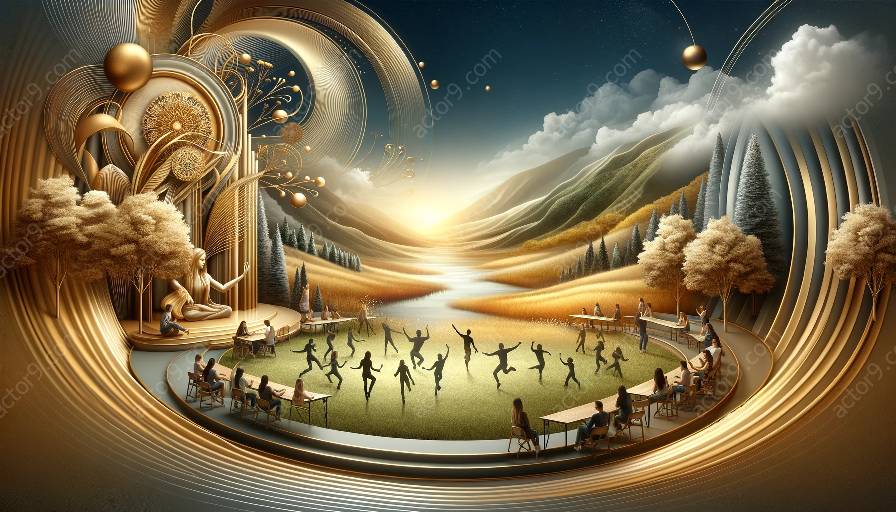Physical theatre techniques offer a dynamic and engaging approach that can be adapted to diverse academic disciplines, enhancing learning and creativity. By integrating physical theatre into education, educators can create a vibrant and interactive learning environment that caters to the diverse needs of students. In this article, we will explore various strategies for adapting physical theatre techniques to different academic disciplines and discuss the benefits of incorporating physical theatre into education.
Understanding Physical Theatre
Before delving into the strategies for integrating physical theatre into diverse academic disciplines, it is essential to understand what physical theatre entails. Physical theatre is a form of performance that emphasizes the use of the body as a primary means of expression. It combines elements of movement, gesture, and non-verbal communication to convey narratives and emotions, often in the absence of spoken dialogue. Physical theatre is characterized by its physicality, expressiveness, and ability to transcend linguistic and cultural barriers.
Adapting Physical Theatre Techniques to Diverse Academic Disciplines
Integrating physical theatre techniques into various academic disciplines can enrich the learning experience and foster interdisciplinary connections. Below are strategies for adapting physical theatre to diverse disciplines:
1. Incorporating Physical Theatre into Language Arts
Physical theatre techniques can be utilized to enhance the study of literature and language. Students can use movement and gesture to embody characters from literary works, bringing the text to life in a tangible and immersive way. By physically enacting scenes from plays or novels, students can gain a deeper understanding of the characters' motivations and emotions, fostering empathy and critical thinking skills.
2. Introducing Physical Theatre in Science and Mathematics
Physical theatre techniques can be employed to illustrate scientific concepts and mathematical principles. Through movement-based activities, students can visualize abstract scientific phenomena and mathematical equations, making complex ideas more accessible and engaging. By embodying scientific processes or mathematical functions, students can internalize and retain knowledge more effectively.
3. Using Physical Theatre in History and Social Studies
Physical theatre can serve as a powerful tool for reenacting historical events and exploring socio-cultural contexts. Students can use movement, tableau, and physical improvisation to recreate pivotal moments in history, gaining a deeper appreciation for the social, political, and cultural dynamics of different time periods. By embodying historical figures and engaging in physical storytelling, students can develop a visceral connection to the past, fostering historical empathy and critical analysis.
4. Integrating Physical Theatre in Performing Arts and Physical Education
Physical theatre naturally aligns with performing arts and physical education, offering students opportunities to develop kinesthetic awareness, expressiveness, and bodily control. Through physical improvisation, ensemble collaboration, and movement exploration, students can expand their creative repertoire and develop their physical and vocal capacities. By integrating physical theatre principles into performing arts and physical education curricula, students can cultivate holistic artistic and physical literacy.
The Benefits of Integrating Physical Theatre into Education
Adopting physical theatre techniques across diverse academic disciplines yields numerous benefits for both educators and students. Some of the key advantages include:
- Multisensory Learning: Physical theatre engages multiple senses, enhancing experiential learning.
- Enhanced Creativity: Physical theatre fosters creative expression and imagination, contributing to divergent thinking and inventive problem-solving.
- Emotional Intelligence: Engaging in physical storytelling cultivates emotional intelligence and empathy, promoting social and emotional learning.
- Interdisciplinary Connections: Integrating physical theatre creates bridges between different academic subjects, fostering a holistic and interconnected approach to learning.
- Expressive Communication: Physical theatre empowers students to communicate ideas and emotions non-verbally, honing their expressive abilities.
By leveraging the unique qualities of physical theatre, educators can nurture a vibrant learning environment that honors diverse learning styles and encourages active participation. The integration of physical theatre techniques across academic disciplines equips students with valuable skills that transcend traditional boundaries, nurturing a deep appreciation for the arts and fostering creative, critical, and compassionate thinkers.
Conclusion
Adapting physical theatre techniques to diverse academic disciplines presents an exciting opportunity to revolutionize the educational landscape, infusing learning with creativity, empathy, and embodied expression. By implementing the strategies outlined in this article, educators can harness the power of physical theatre to enrich the educational experience, foster interdisciplinary connections, and cultivate the next generation of versatile and empathetic learners.




































